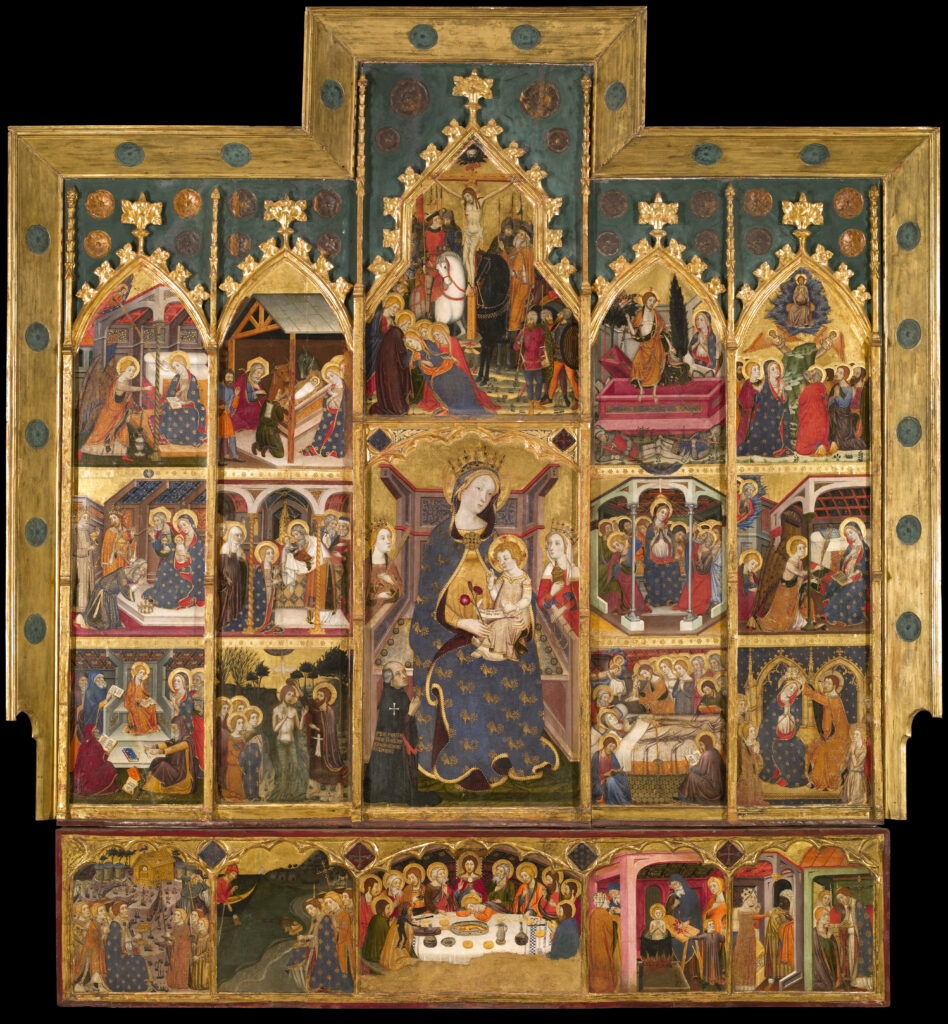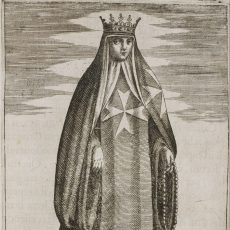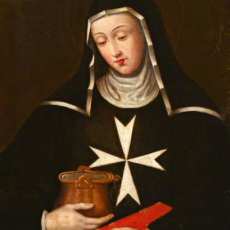The altarpiece of the Virgin from the monastery of Sigena (Aragon) is a work of tempera painting on board made between 1367 and 1381 by an anonymous master who has identified with Pere Serra or Jaume Serra. It is currently preserved in the National Museum of Art of Catalonia.
The work testifies to the development experienced by the altarpiece from the second third of the fourteenth century. The main table depicts the Virgin Mary enthroned with the Child and The Holy Catherine of Alexandria and Mary Magdalene.
work testifies to the development experienced by the altarpiece from the second third of the fourteenth century. The main table depicts the Virgin Mary enthroned with the Child and The Holy Catherine of Alexandria and Mary Magdalene.
The figure of the altarpiece principal, that is, who has commissioned it, is placed on the knees at the feet of the Virgin and its identification is contained in an inscription over-added to the habit: FRA: FONTANER: D: GLRA: COMNADOR: D: SIXENA. This legend is an important reference for the history of the altarpiece as no document is known to refer to its hiring or payment. Fray Fontaner de Glera was commander of Sigena at a date after 1363. Therefore, Jaume and Pere Serra (especially the latter) could have been the authors in the period 1363-1375, since Francesc Serra died in 1362. The twelve scenes of the side streets relate to mary's seven joys, to evangelical stories and the Acts of the Apostles from the Annunciation to the Coronation of Mary and are topped off with Golgotha in the attic.
As for the predella, four Eucharistic miracles accompany the central representation of the Last Supper. In the paintings dedicated to Eucharistic miracles one can observe the expression of an explicit message through the image that refers to the negative consideration that medieval society had of the Jewish people and their relationship with divine anger, concreted in the successive outbreaks of the plague of those years and in the famine.



